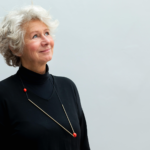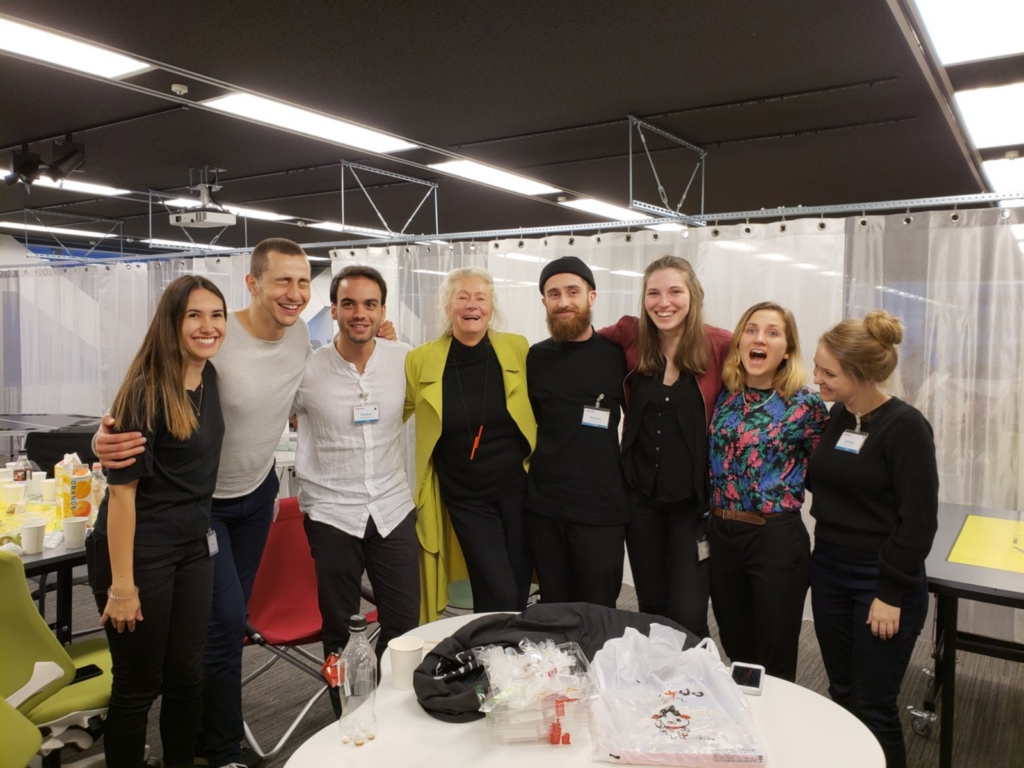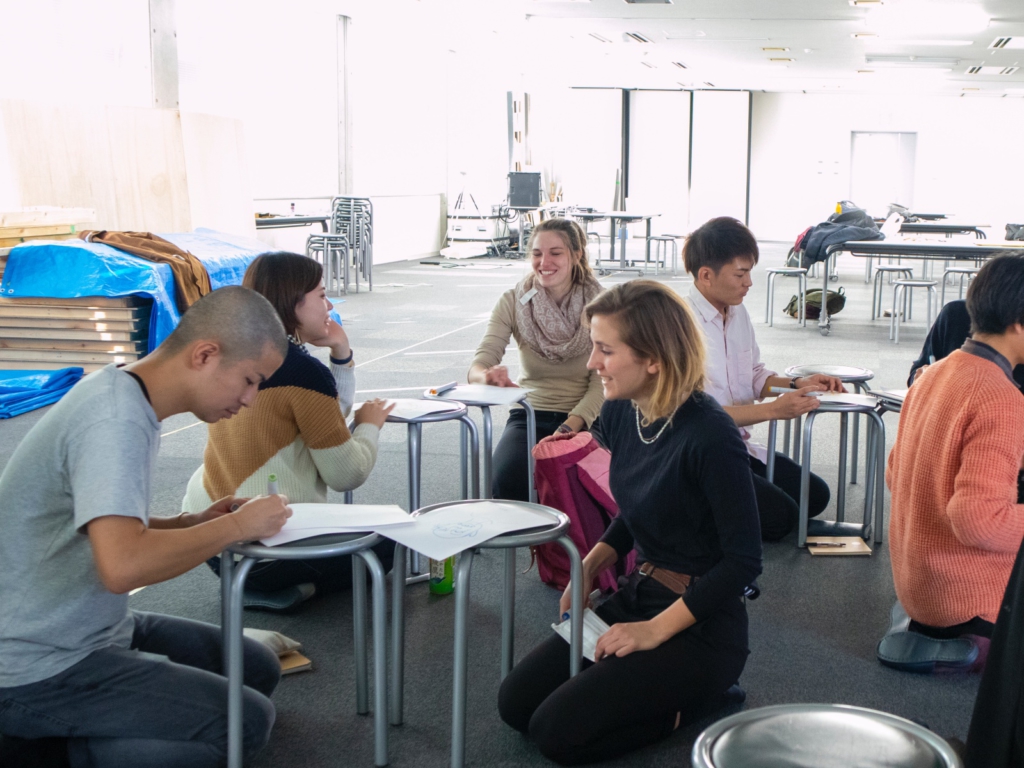In this second collaboration between Chiba University, KISD – Köln International School of Design and Toshiba, the design team from Toshiba challenged us again with a very relevant and mind-tickling question: How to ask the right question! Indeed, it is a big challenge to translate all the data and information that were gathered throughout a thorough exploration phase into “good questions” – questions that open the door into the future, that go beyond the evident improvements of systems, and that lead to the relevant outcomes.
At first glance, this task could be about gathering processes and methods for synthesis, maybe inventing some new methods and making these accessible to designers in an easy and applicable way. Big enough of a challenge – indeed! But in the process of exploring the project task and by regarding this project as a service design challenge, it became even more complex. Asking the right question is all about getting relevant outcomes. And taking this into consideration, the right questions need to be asked at the starting point of any project and not only in the convergence and synthesis phase. So, how can we make sure that the right questions are asked very early? And how can we make sure that these questions are then not only pursued by the design team, but are also supported by the business team? And by the client! Because only if there is a shared understanding of the challenge, there will be collaborative energy for making relevant change happen. Then, of course, it is also about enabling designers to work with the available methods, knowing about them, understanding them, and being able to apply them.
So, after reframing the project task, the students visualized the project as a “project journey” with the different touchpoints and the roles the different stakeholders play throughout the project. The students identified improvements to these touchpoints, and they added additional touchpoints that would improve the overall journey. For example, they created an online platform that will give all Toshiba designers access to available tools, the proposed an app that would help to facilitate workshops, and they integrated this with the recommendation for an educational approach that would educate every designer and create specific heroes for special tools.
This project has shown how the service design approach is useful by not only fulfilling the given task, but by contextualizing it, reframing it, and embedding it into the bigger picture. At the same time, this project was an amazing experience in intercultural collaboration. Not only was it a challenge for the students to bridge their learned ways of communication, so they would connect to different cultures – but also bridging between the university and the Corporate Culture was a great experience. KISD sincerely hopes that some outcomes of the project will leave traces at Toshiba and might have an impact on the future success of the design team and the company.
We are very grateful for the openness of the Toshiba design team that made this experience possible. We are convinced that this project will leave a lasting impression with the student teams, but also with the professors and the partners from Toshiba. We also very grateful to for the effort and commitment the Chiba University – represented by Prof. Shinji Watanabe.




